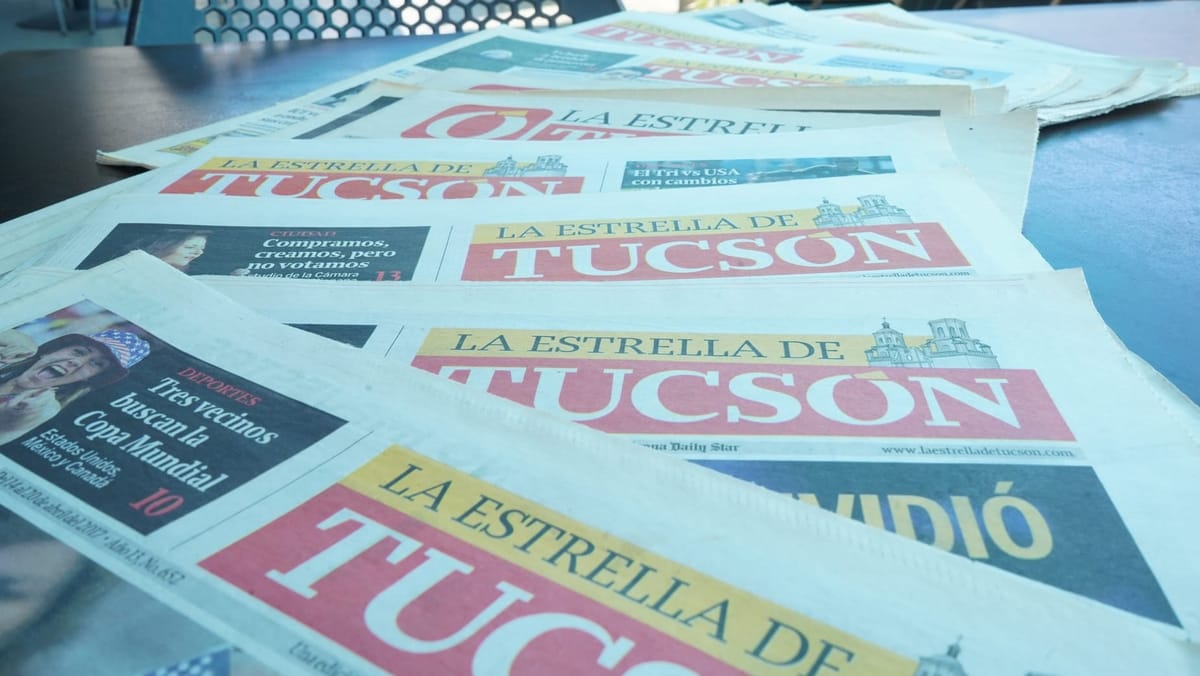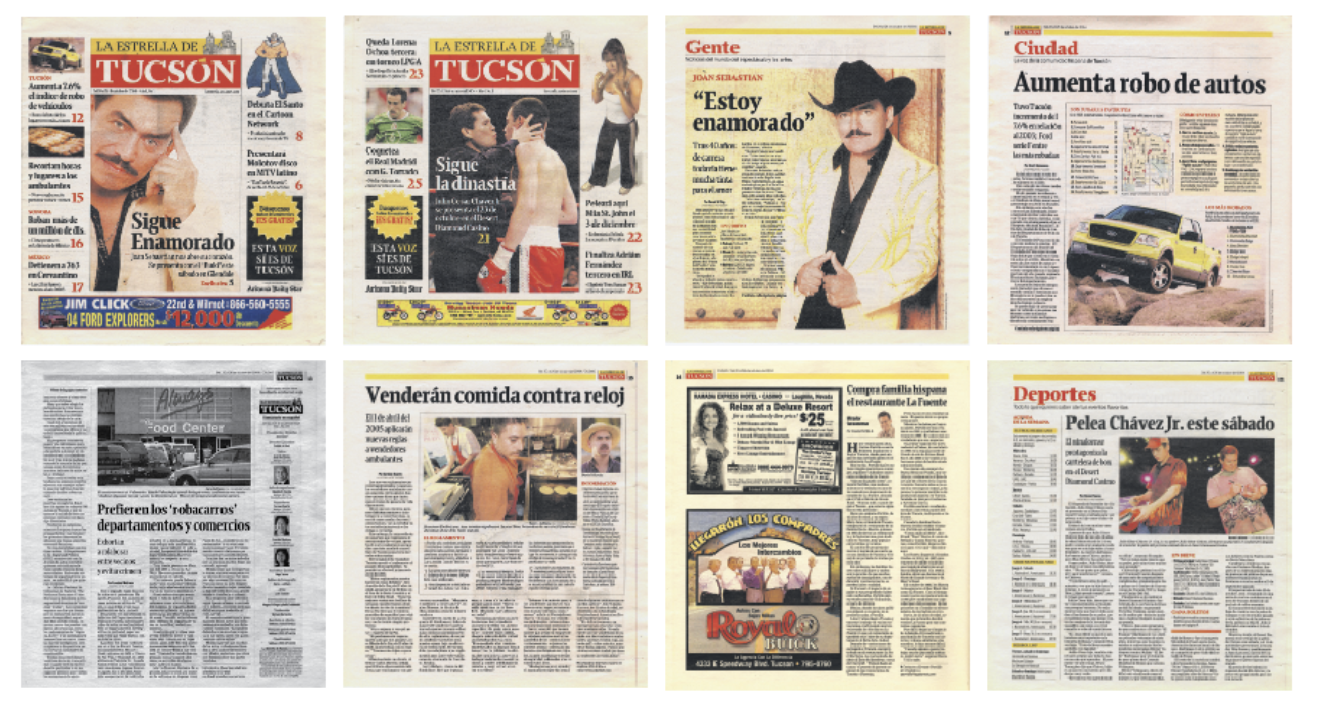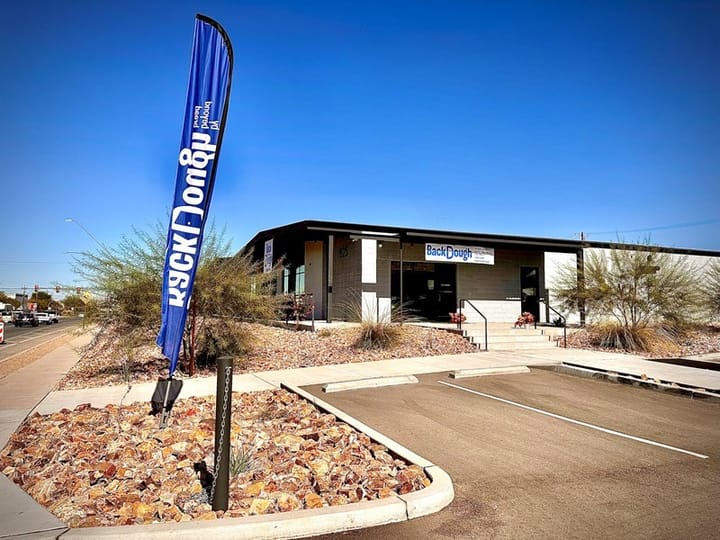Inside La Estrella de Tucsón’s early years
La Estrella de Tucsón began as a vibrant, community-rooted Spanish-language newsroom led by immigrant and Hispanic journalists, but over time, financial pressures and industry shifts eroded its original mission and staff.

La Estrella de Tucsón began with a close-knit, immigrant newsroom deeply rooted in the community it covered. Its reporters produced original journalism in Spanish, building trust and credibility with readers.
But over the years, financial pressures and industry changes led to staff cuts and a shift away from original reporting, leaving the once-thriving newspaper diminished.
In its early stages, the newsroom was staffed by a Hispanic reporter from the Arizona Daily Star, Carmen Duarte, a group of interns, a graphic designer and a photographer, all working under Editor Jose Merino. The entire inaugural team was either immigrant or Hispanic.
“The culture (of the newsroom) was very beautiful,” said former La Estrella de Tucsón editor Liliana Lopez Ruelas. “We were a close-knit team, it was a very migrant culture, it was like a little Mexico inside the newsroom.”
Stories in La Estrella were conceived and published entirely in Spanish, driven by journalists who were part of the very community they covered—a connection that earned strong support from readers, Merino said.
“Carmen is an institution in local journalism,” Merino said of Duarte. “(She) was key to this because she was a writer for The Star and offered credibility. She knew the community, she was part of the community, we were all a part of the community we were trying to cover, which is a really powerful thing.”

La Estrella’s team took an “in the streets” approach, attending cultural and political events and founding some of today’s continuing traditions like the Tamal Festival. They also maintained relationships with organizations like the Mexican Consulate, even starting a small book fair at the consulate where they gifted families books.
Being out in the community and creating events were essential for building trust and strengthening ties with the Hispanic community.
“I think the business plan was the most solid part of the project. I think it capitalized very well on the business opportunities that existed at the time, and I can proudly tell you that it didn't take months or years for the project to be economically viable,” said Merino, adding that La Estrella was profitable after only five weeks. “We were making money, which opened up many opportunities for us within the Daily Star.”
The stories were so strong, they began translating them into English for publication in the Star, further boosting La Estrella’s credibility as a trusted source of information.
What set La Estrella apart from other Spanish-language publications in circulation was its focus on delivering news and information to the community through professionally trained journalists.
That’s what attracted Lopez Ruelas to La Estrella when she arrived in Tucson in 2009.
“I remember doing a little scan of the media at the time and realizing that La Estrella was really doing journalism, really covering the Hispanic community, especially the Mexican community,” Lopez Ruelas said. “At that time, La Estrella, as far as I could see, was the only one doing community journalism.”
While English-language newspaper circulation declined by 11% in the late ’90s and early 2000s, the number of Spanish-language publications tripled, reaching a total circulation of 1.7 million, reflecting the United States’ growing Latino population.

La Estrella was also a strong advertising vehicle.
“At that time, many large companies had budgets dedicated to Hispanic media. However, there weren't the vehicles, the necessary means to put that money to work,” Merino said. “The publications that existed back then weren't large enough to attract major advertisers.”
La Estrella became that vehicle. They sold advertising to JCPenney and other major retailers.
Merino left La Estrella in 2009 to become a community development liaison for the Sunnyside Unified School District. Ernesto Portillo Jr. stepped in as editor. Merino had already seen signs of the journalism industry's decline following the 2008 financial crisis.
While Spanish-language newspapers didn’t feel the impact as early as English-language outlets, they’ve seen more than a 10% decline since 2019, a downturn worsened by the COVID-19 pandemic.
Unlike Merino and Lopez Ruelas, La Estrella’s other two editors, Portillo Jr. was a second-generation Mexican American who was born and raised in Tucson.
Portillo Jr. first worked at the Arizona Daily Star, initially writing three columns per week. That eventually shrank to one column, as additional duties were assigned to him. At first, he didn’t want to take on the role of La Estrella’s editor, but he soon recognized the importance of providing news to the Hispanic community.
“We were delivering news that people otherwise would not get,” Portillo said. “Television, I wasn’t confident was covering the community. Certainly radio wasn’t covering the community.”
Susan Barnett is Deputy Editor of Tucson Spotlight and a University of Arizona alum. Contact her at susan@tucsonspotlight.org.
Tucson Spotlight is a community-based newsroom that provides paid opportunities for students and rising journalists in Southern Arizona. Please consider supporting our work with a tax-deductible donation.



